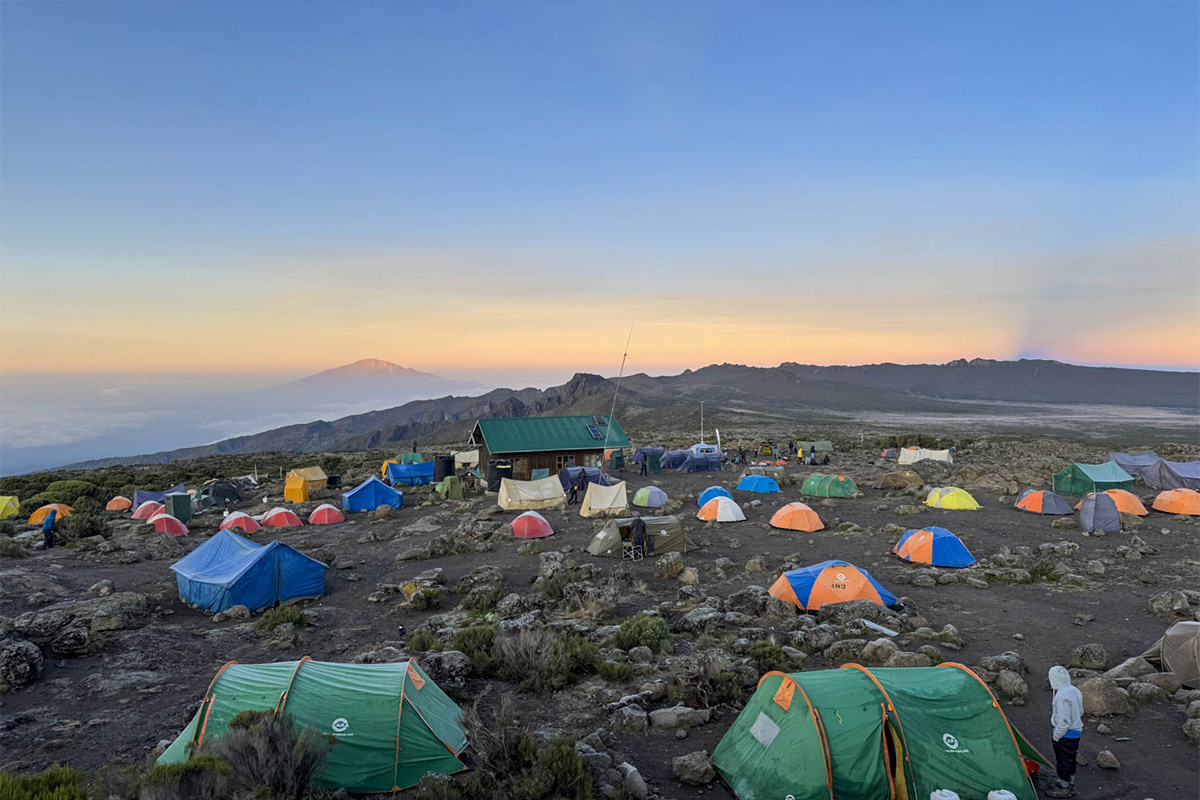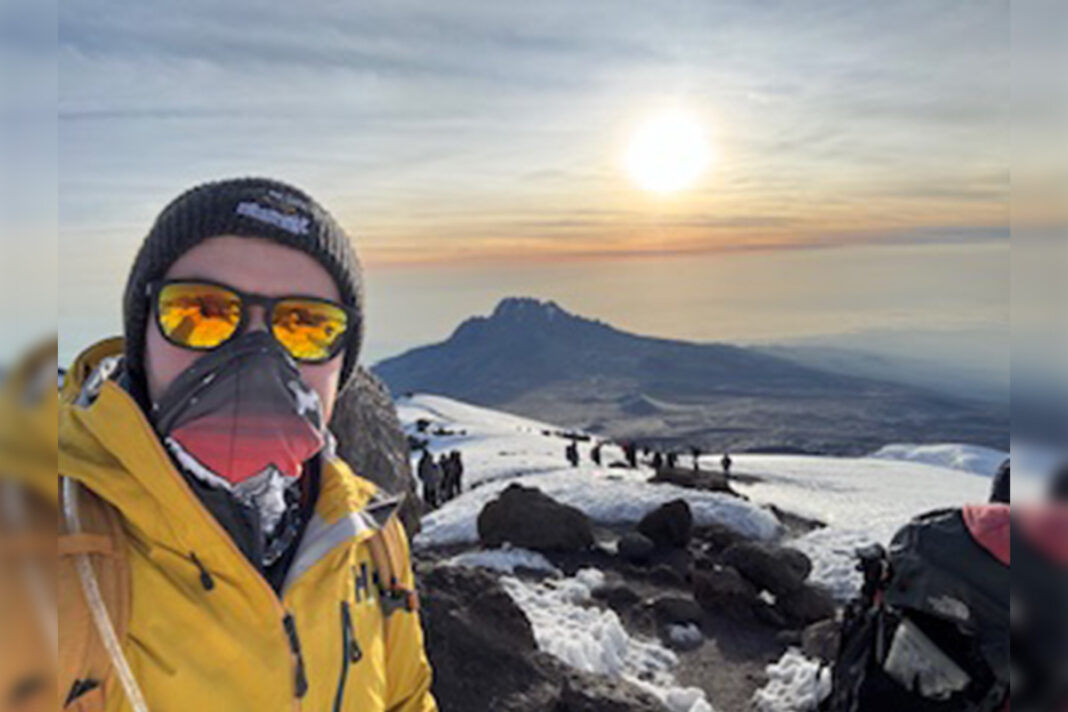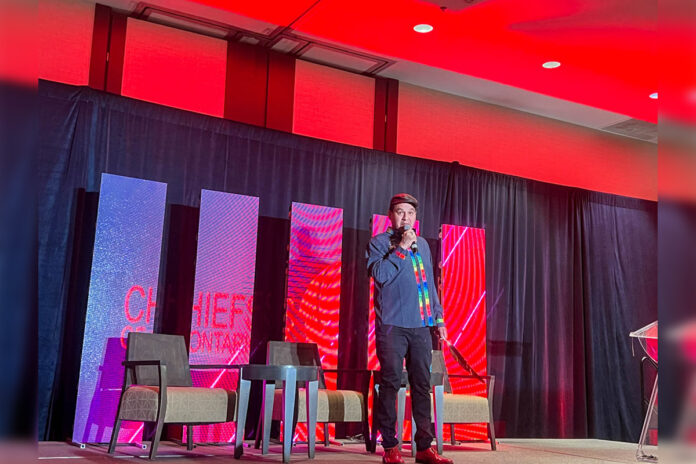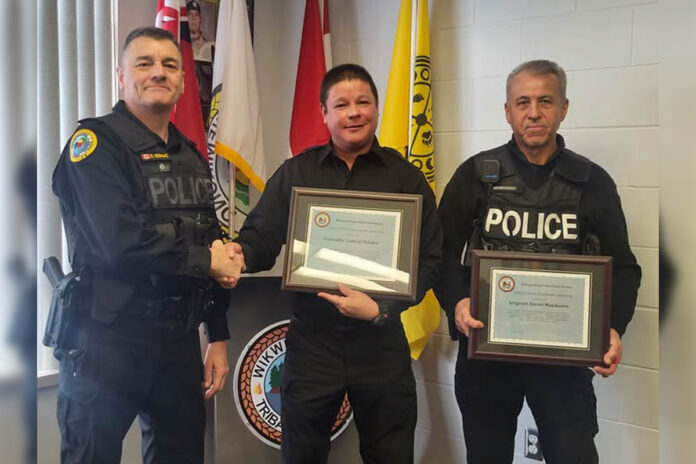Kagawong man pushes to the peak
TANZANIA—While most of us were disassembling our Christmas trees and storing holiday ornaments, Harrison Noble, Jesse Beaudin and Jenn Delange set off on the adventure of a lifetime.
“We left Canada on January 6 and arrived in Moshi, Tanzania on January 7,” Harrison Noble told the Expositor. “On January 9 we started our seven-day trek on the ‘Lemosho Route’ through the rainforest at roughly 2,000 metres elevation. The trek covers five different climate zones.” When asked what kind of training was involved in setting such a goal, “A lot of hiking the Cup and Saucer with heavy backpacks,” was the answer.
Kilimanjaro, though not one of the tallest mountains in the world, is the tallest African mountain at 5,895 metres and one of the tallest free-standing mountains, being a dormant volcano and not part of a mountain range. It stands as the highest peak in the Eastern Hemisphere and, topographically, the fourth most prominent peak on earth. Though not one of the most difficult mountains to climb, meaning no extra equipment is required, its sheer prominence makes it one of the more challenging mountains in terms of altitude sickness. “We were climbing 1,000 metres a day in some cases,” Jesse Beaudin said.

“Most days would range from 8km to 17km of hiking, depending on what elevation you had to climb that day,” Mr. Noble explained. “The route is designed so that everyone has the best chance to acclimatize as you progress higher. There were five days of hiking and on the fifth night, at midnight, we started the summit push – roughly six hours to Stella Point, at the crater rim, and then onwards to watch the sun come up from Uhuru Peak, the highest point in Africa. That was on the 14th of January at 6 am. It was an amazing experience for sure, and a long three years of thinking of it every day,” he said with pride.
Because elevation sickness is so prevalent with climbers, guides make sure their time on the summit is brief. “Once you’re at the top, they get you down pretty quickly,” Mr. Noble said. “You get to base camp and you’re only there for about an hour and then you’re down and off the mountain by the next day.”
No two people experience the climb in the same way. On that final push to the summit, several people realized their bodies would not allow them to go further, a disheartening but necessary decision to make for their own safety. Mr. Beaudin was told on day four that it would not be wise to continue. Lack of oxygen at high elevation is a serious threat and he was suffering the consequences. “They told me I had two options: I could take a helicopter down, but that would cost me about $3,500 US, and I’d go to the hospital and get an assessment and have those medical bills to pay. ‘What’s option two?’ I asked, ‘It’s about 10 hours down, so start walking.’ It was just over a 20km walk down, so I started walking.” Though it felt so close, with the snow caps right there, a stone’s throw away, it was still another day and a half hike to the top and Mr. Beaudin knew his body would not be able to handle it.
However, Mr. Beaudin did not let this setback mar his trip to Africa. “It ended up being a blessing,” he explained, “as I walked down, my energy came back, my symptoms were alleviated, and because I had two extra days, I used that time to go on a safari.” Admitting that a safari had always been one of his life-long dreams, he said he had been a little disappointed that their relatively quick trip to Africa would not allow time for him to pursue this dream. Now, suddenly, he had two extra days. He booked a one-day safari to the Bora Bora crater, a couple of hours away. “There were elephants, lions, hippos and zebras. It was all out in the wild, in a protected conservation area” he said.
“Kilimanjaro opened my eyes to the fact that I’m very much a sea-level guy,” Mr. Beaudin admitted. “That was a one and done for me. To be honest, the reason I did it was to kick Harrison into going after this dream of his that he’s talked about doing for the last five years. So, even though I failed on that mountain, we both got what we came to Africa for.” Testing endurance and accomplishing goals, what better way is there to begin a new year?
by Margery Frisch





